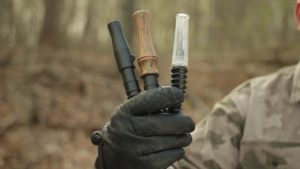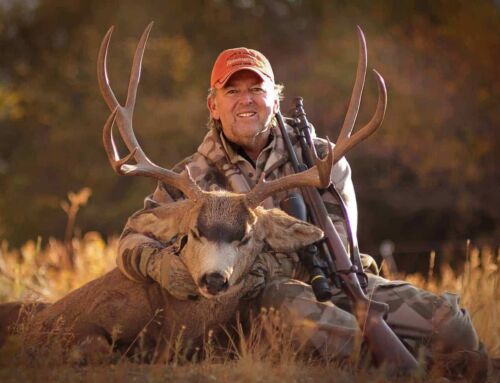 Grunting is most effective when you spot a buck first, and then go to work with your grunt tube.
Grunting is most effective when you spot a buck first, and then go to work with your grunt tube.
You should grunt at every buck, both shooters and small 4- or 6-points, that you see slipping down a ridge or ducking into cover up to 125 yards away. In my field-testing, a deer can hear your calls that far if the wind and terrain are right. The more bucks you see and call to, the more you learn from their reactions.
When a buck hears your grunts, 9 times out of 10 he will stop and look your way. Sometimes he might stand there and stare, but more likely he’ll drop his head and continue on his merry way.
Okay, now grunt at him again, louder. Vary your calls from sharp contact grunts to guttural low grunts. If the rut’s on, cut loose a stream of your best tending grunts. Your third or fourth set of grunts might strike a chord and stop the buck.
More times than not, a buck will move on, but that is okay. You’ve called to him and watched his reactions, and that is great experience. But on a few lucky hunts, a buck will eventually get curious and look and even step your way.
Now, once you have his full attention, don’t grunt. He might see you move your hands, or he won’t see another deer over there, causing him to hang up or back off into the brush. Instead, when the buck cuts his eyes away, grunt a few times and just loudly enough to stay in contact with the deer and pique his curiosity even more.
Watch a buck, and if he breaks your way, do not call again. Let him walk, get your bow or gun ready and look for clear shooting lanes. Grunt again only if he loses interest and veers off course.
One day I grunted at a 150-class giant that stopped, looked at me for a second and kept on moseying, like most bucks do. He topped a ridge and was gone before I could get off a shot.
A half-hour later, I heard crunching behind my stand. I swiveled my head and a deer started blowing at me. The same buck! He had walked on out of sight, but he must have gotten curious of my calls and snuck back in on the downwind and busted me.
That happens more than you imagine. Since that day, after grunting to a buck, I always keep my edge and keep watching, especially to the rear and downwind of my stand.
And it has paid off. I know of 6 bucks for sure that have come on a belated and roundabout way to my grunts. Five of those bucks got away a second time—they came to my calls, but not close enough for a bow shot—but I killed the other one. That 8-point wasn’t the biggest buck I’ve ever grunted in, but he is one of the most memorable because over the course of 40 minutes I worked him in with my call.






